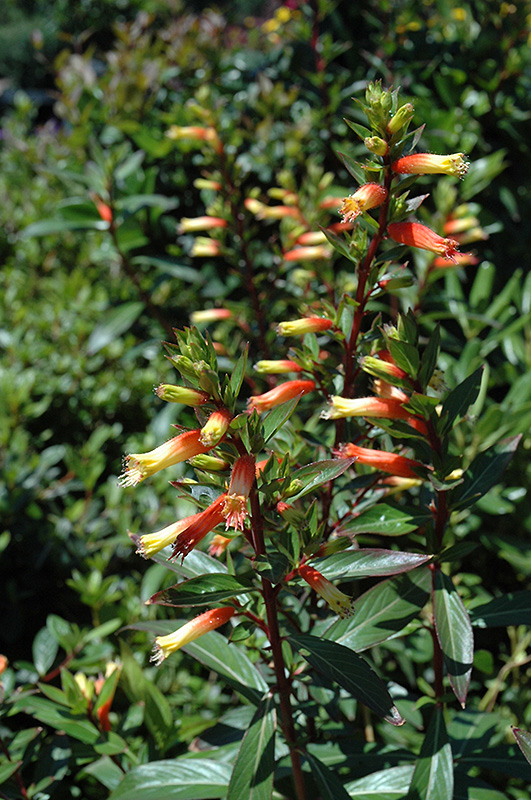Candy Corn Lobelia
Lobelia longiflora 'Candy Corn'
Height: 5 feet
Spacing: 20 inches
Sunlight:
![]()
![]()
Hardiness Zone: (annual)
Description:
A truly unique perennial with tall purple stalks clothed in dark green leaves; in late spring the upper stalks are adorned with flowers that resemble candy corn, orange-red with yellow tips; a stunning presentation when massed
Ornamental Features
Candy Corn Lobelia features showy spikes of scarlet tubular flowers with orange overtones and yellow tips rising above the foliage from late spring to mid summer. The flowers are excellent for cutting. Its pointy leaves remain green in color with prominent burgundy tips throughout the season. The purple stems are very colorful and add to the overall interest of the plant.
Landscape Attributes
Candy Corn Lobelia is an herbaceous annual with an upright spreading habit of growth. Its medium texture blends into the garden, but can always be balanced by a couple of finer or coarser plants for an effective composition.
This is a relatively low maintenance plant, and is best cleaned up in early spring before it resumes active growth for the season. It is a good choice for attracting butterflies and hummingbirds to your yard. It has no significant negative characteristics.
Candy Corn Lobelia is recommended for the following landscape applications;
- Mass Planting
- General Garden Use
Planting & Growing
Candy Corn Lobelia will grow to be about 5 feet tall at maturity, with a spread of 24 inches. When grown in masses or used as a bedding plant, individual plants should be spaced approximately 20 inches apart. Although it's not a true annual, this fast-growing plant can be expected to behave as an annual in our climate if left outdoors over the winter, usually needing replacement the following year. As such, gardeners should take into consideration that it will perform differently than it would in its native habitat.
This plant does best in full sun to partial shade. It prefers to grow in average to moist conditions, and shouldn't be allowed to dry out. It may require supplemental watering during periods of drought or extended heat. It is not particular as to soil pH, but grows best in rich soils. It is somewhat tolerant of urban pollution. This is a selected variety of a species not originally from North America, and parts of it are known to be toxic to humans and animals, so care should be exercised in planting it around children and pets. It can be propagated by division; however, as a cultivated variety, be aware that it may be subject to certain restrictions or prohibitions on propagation.

